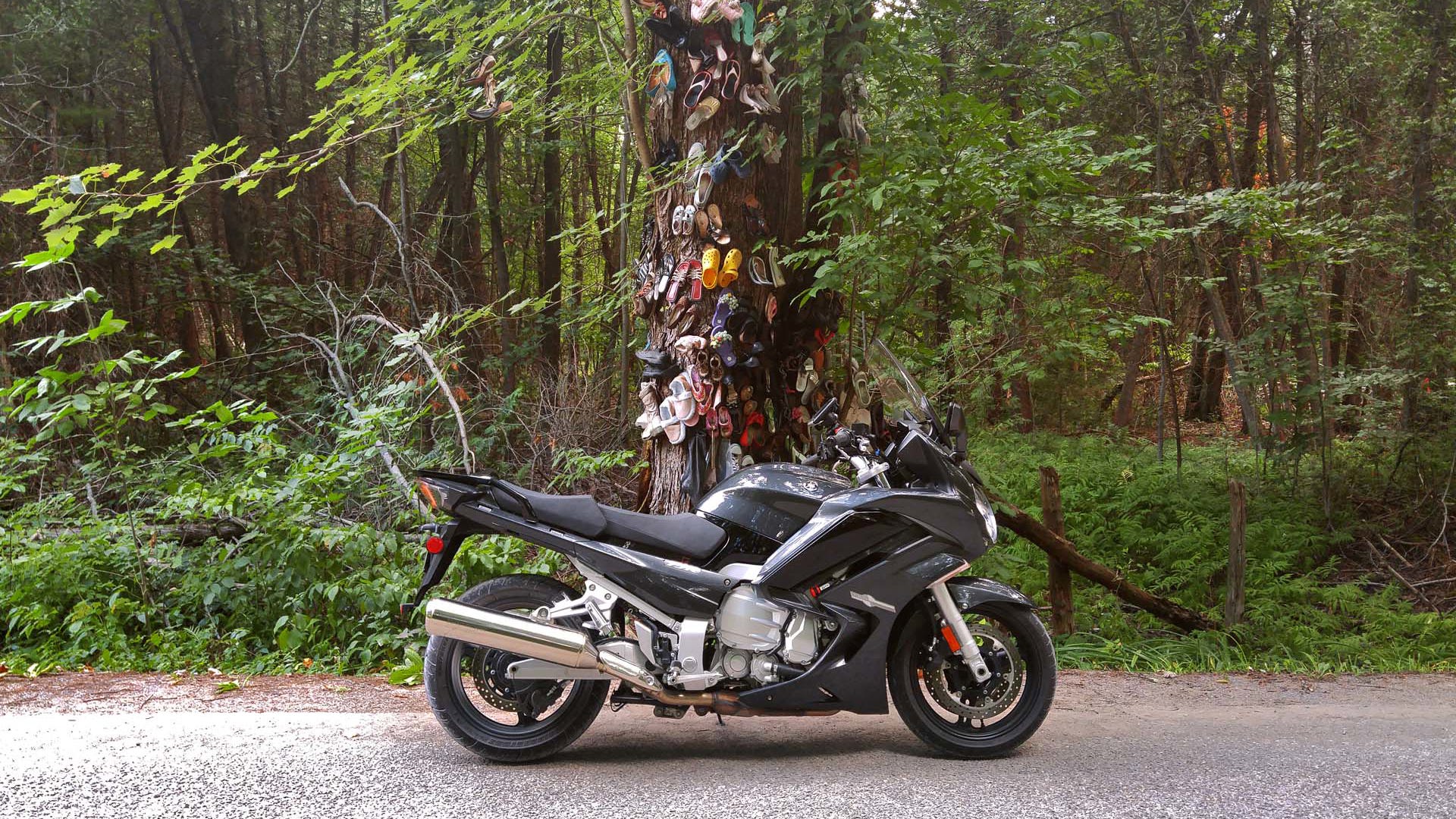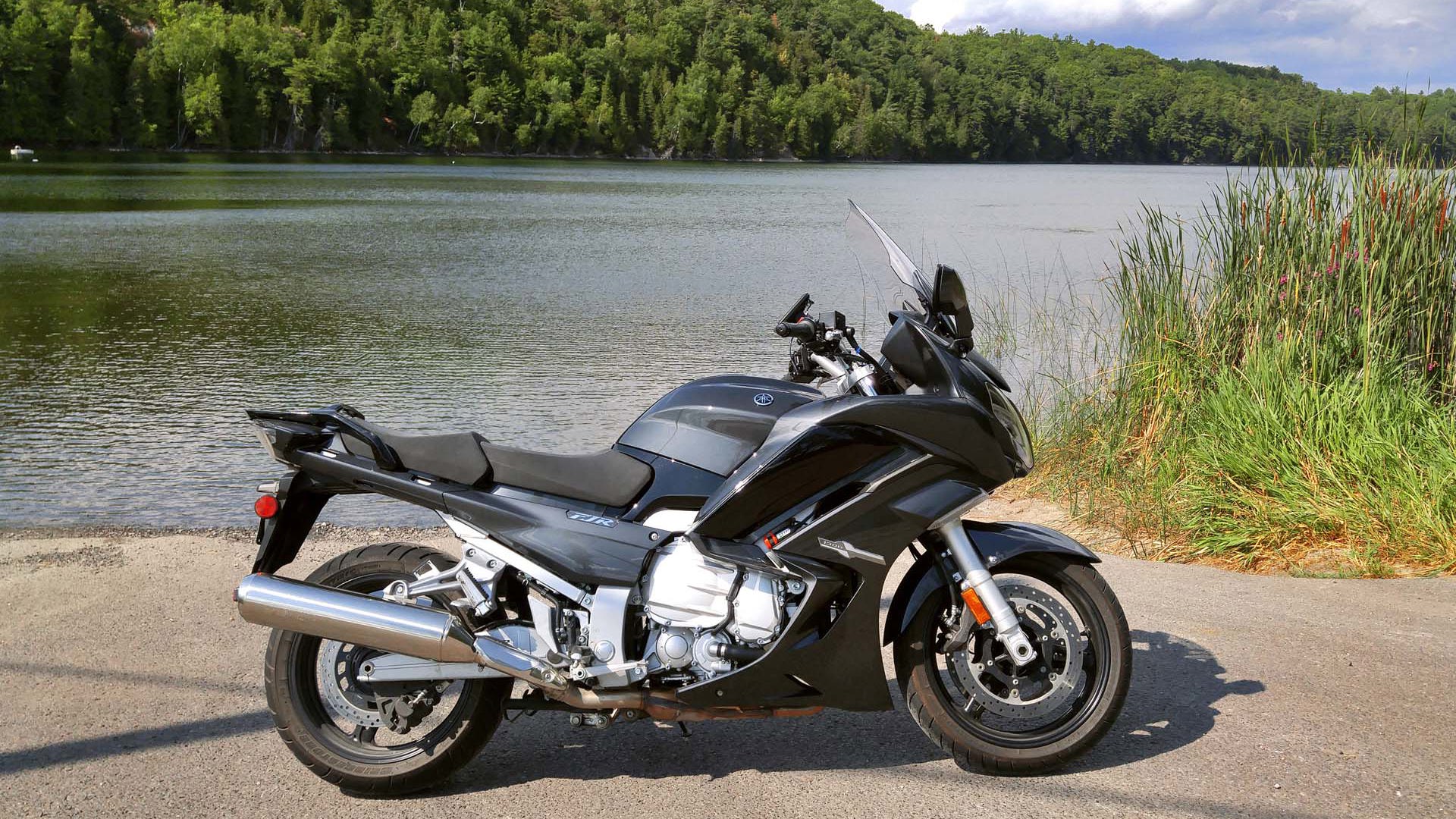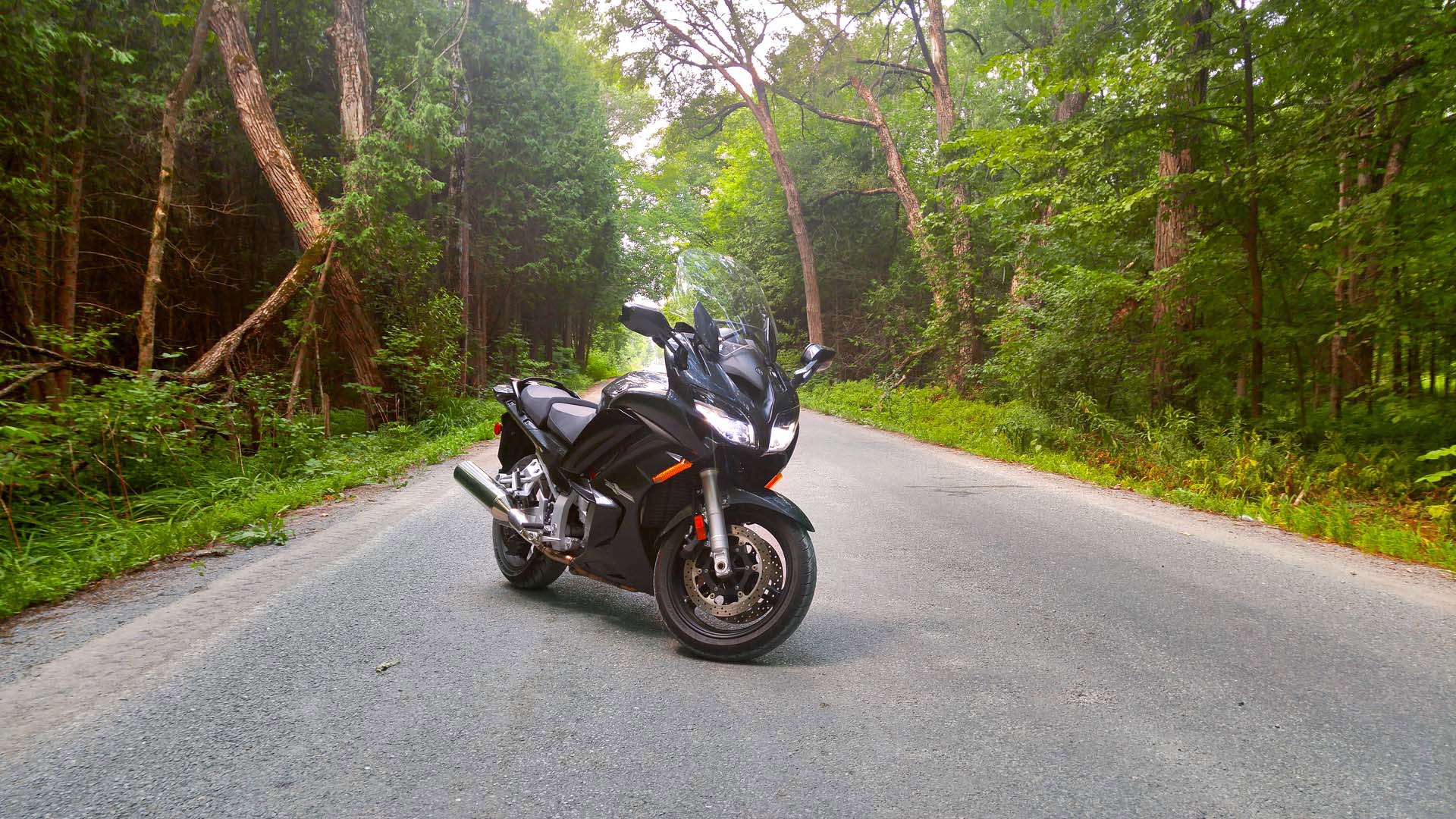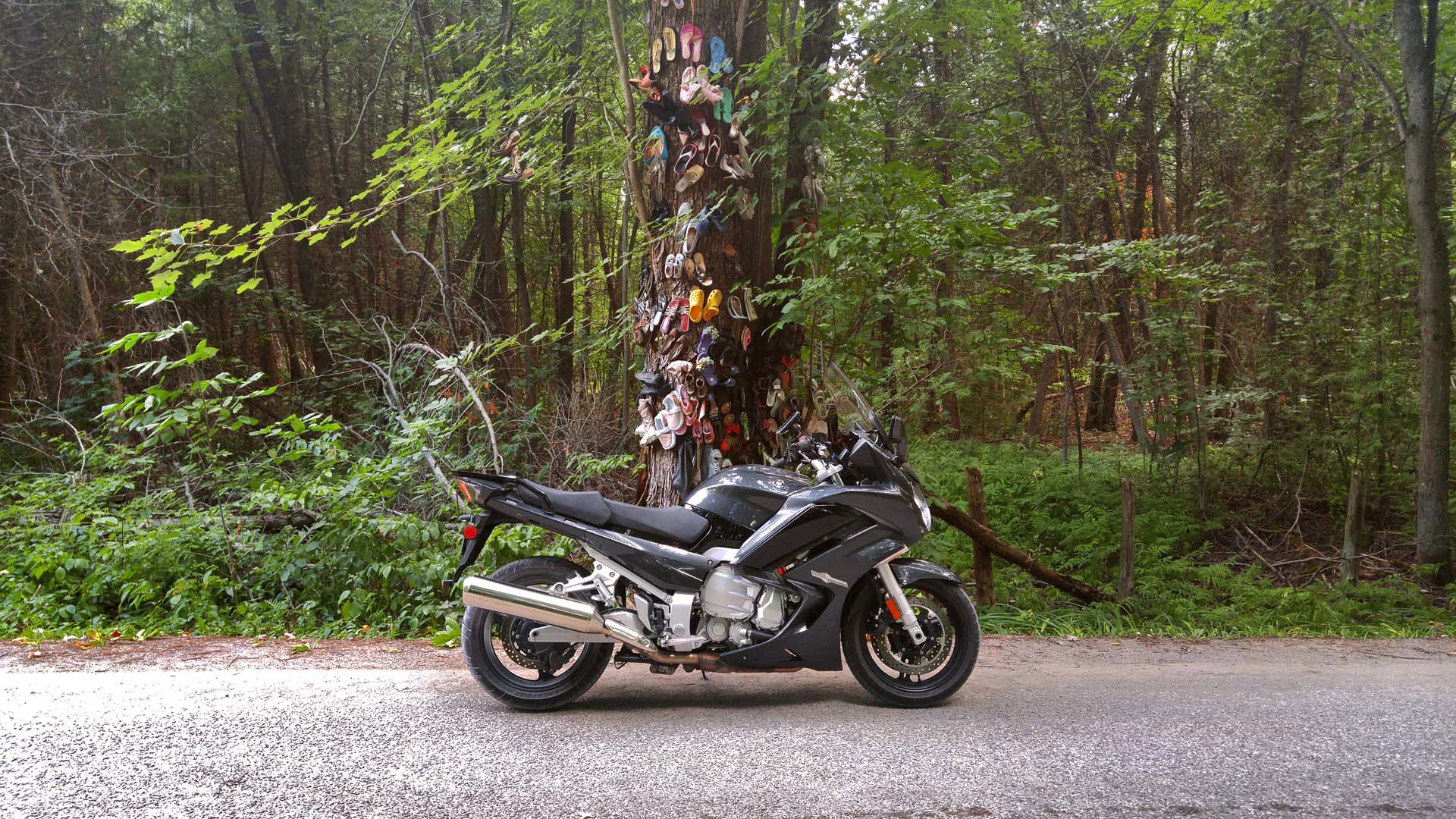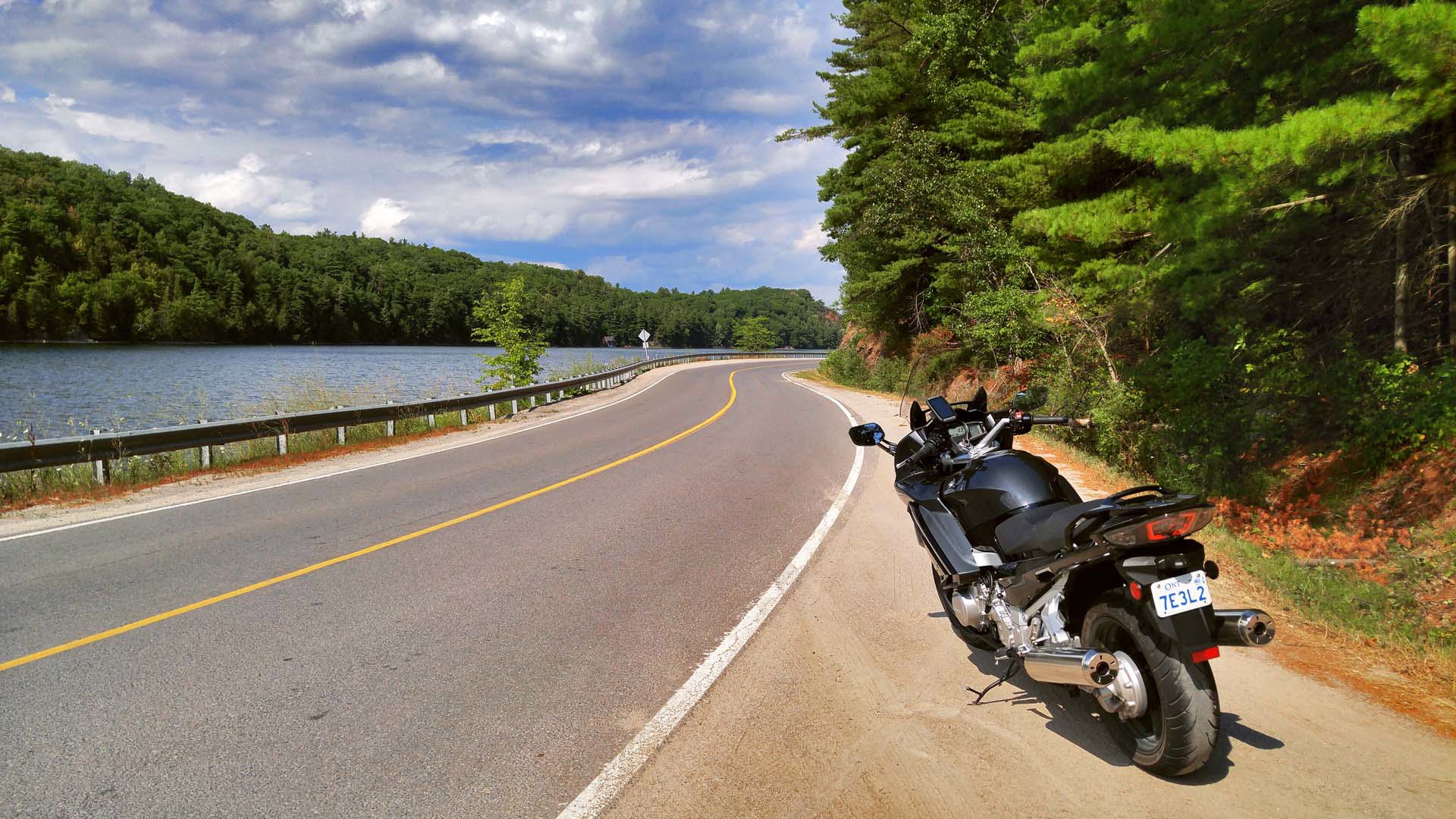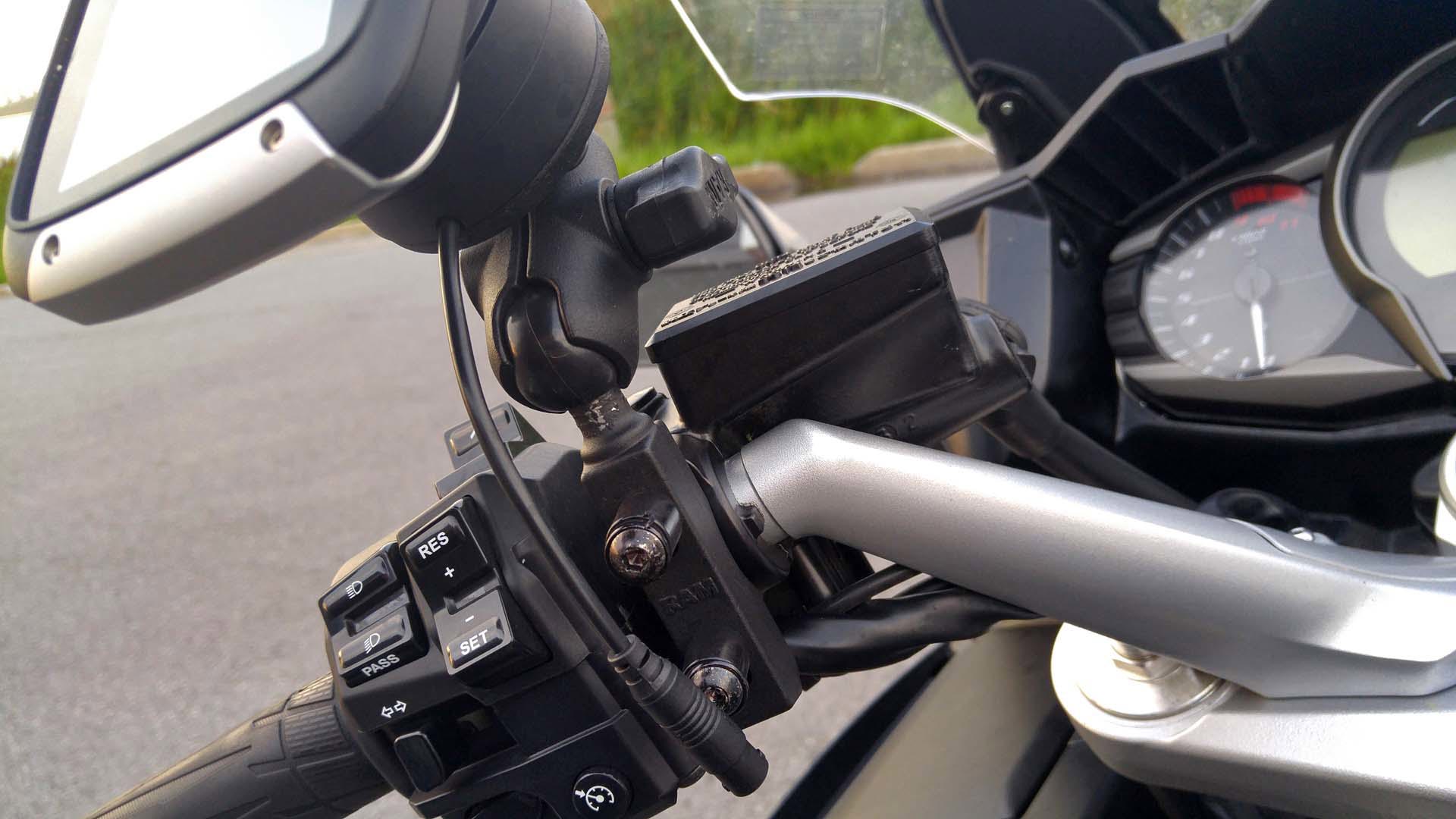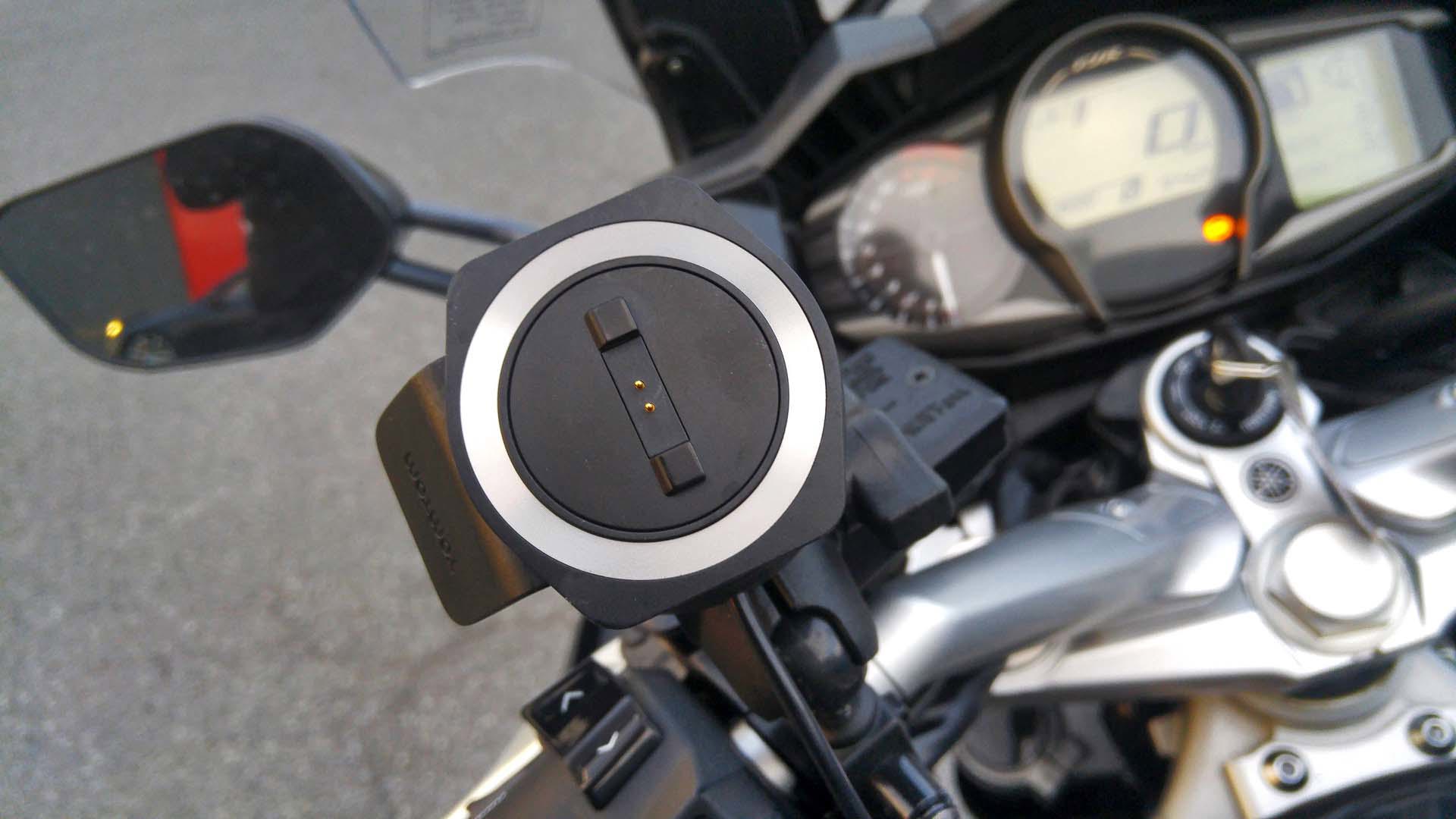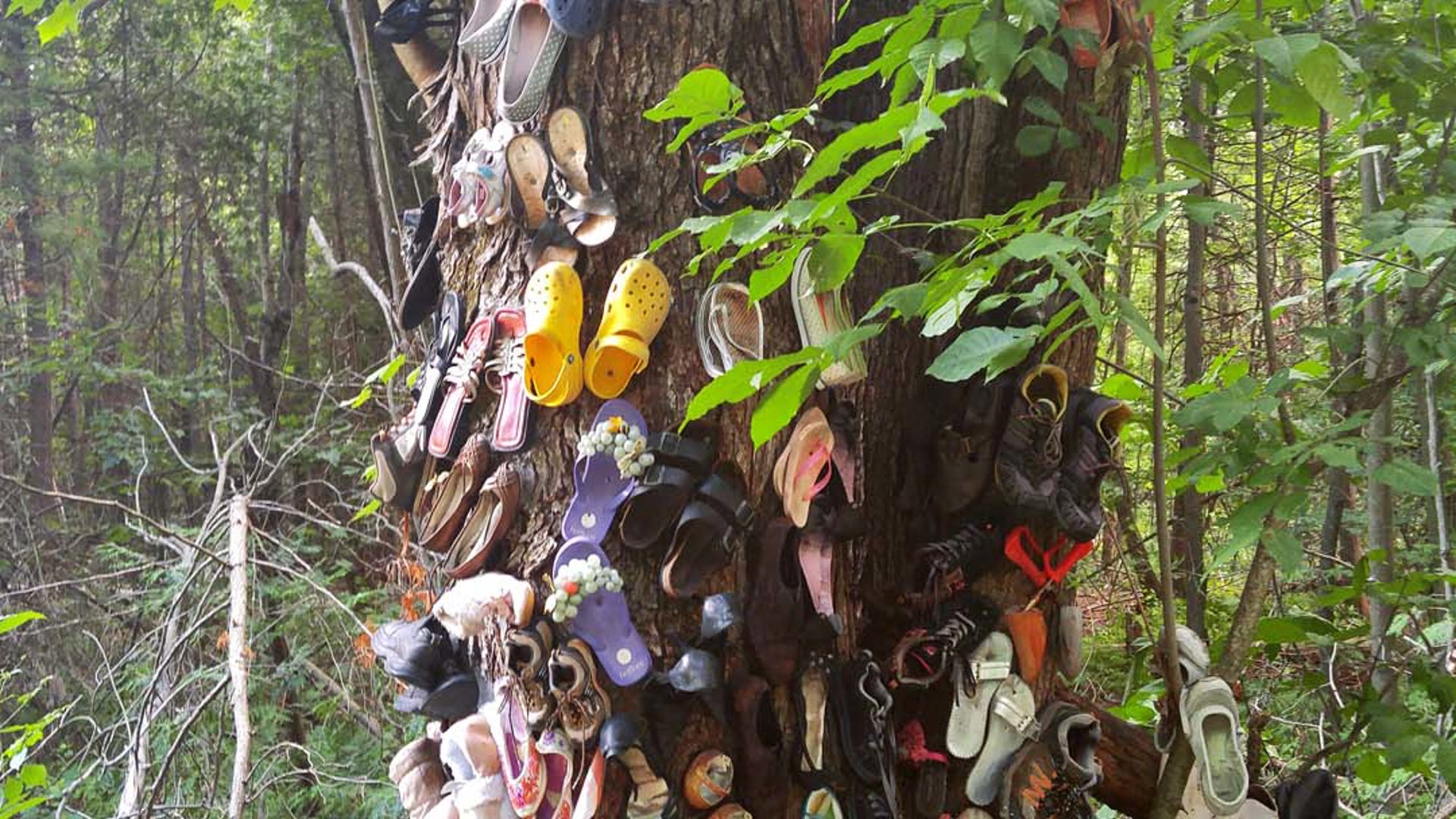They say that motorcycling in the rain isn’t any fun. They are wrong. Motorcycling in the rain is difficult, intense and dangerous. It’s immensely challenging. It’s also immensely rewarding.
The problem is, I am currently too comfortable. After seven hours, my butt is still feeling good, my arms aren’t sore, my spirits are high. So too, on this downhill section, is my speed. So deceptive is this Yamaha FJR1300 that I barely bother to glance at my speedo when I spot the cop in the distance.
Whoops.
“Why’d you stop?” are his first words. He’s almost chuckling. He seems jovial.
“Because you pulled me over.”
The police officer smiles more broadly. He’s not used to motorcyclists actually stopping. Apparently in this part of far-eastern Ontario if you are lit up by the po-po you gun it and go. At 34-years-old with a family and a career I care about, I’m not into that sort of stuff.
Besides, I can’t have been going that quick.
“Say, does that thing tell you how fast you’re going?”
“Well, yes, about [slightly illegal speed].”
“When you saw me you were, what about down the hill?”
“Um, I don’t know to be fair, I was kind of just following the flow of the road.”
“Yeah, it’s nice new pavement. You were doing [much more illegal speed than I thought].”
“Oh.”
He asked me what my traffic record was like. I told him this would be my first Canadian ticket.
“It’s not going to be a ticket.”
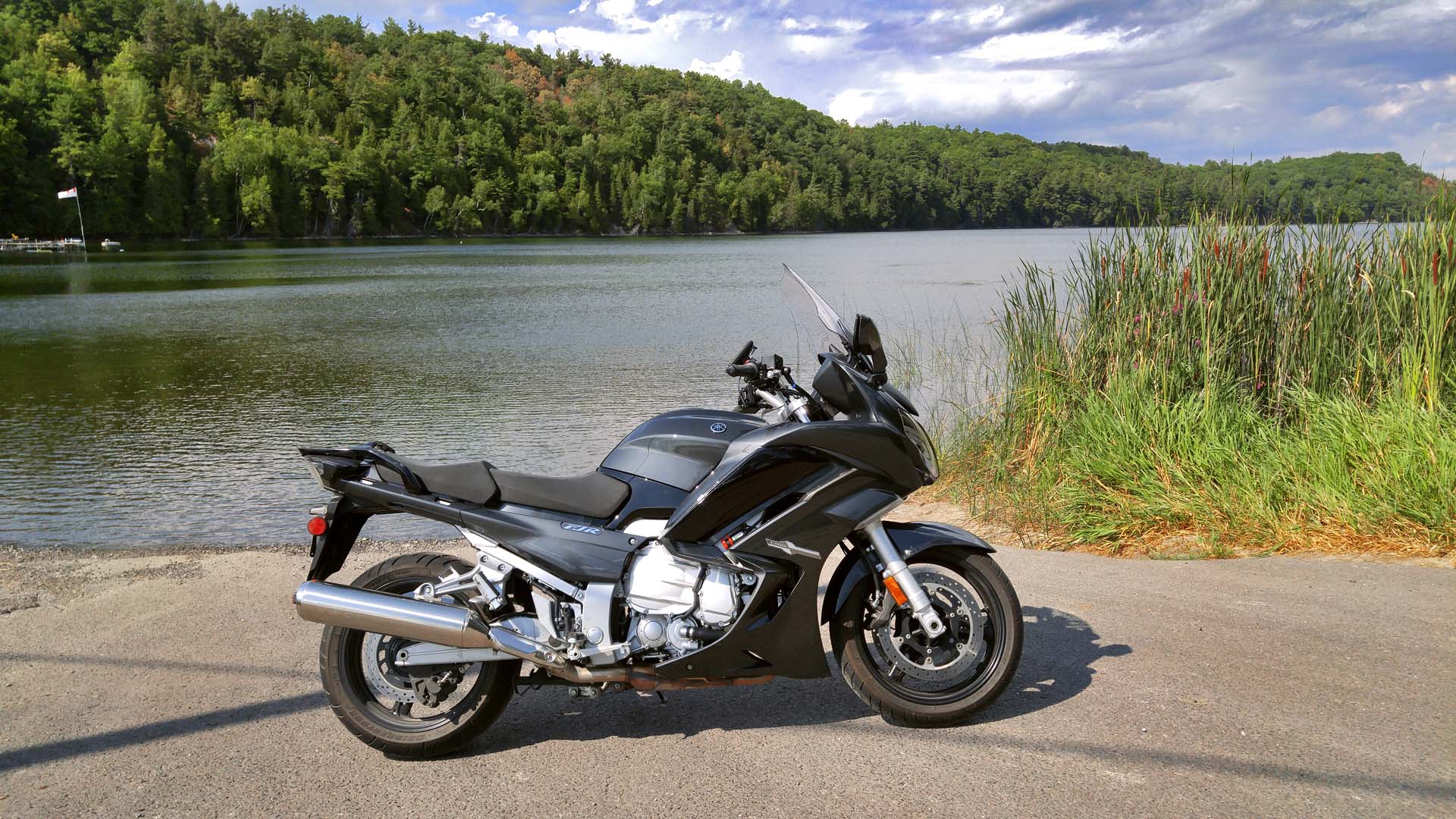
The officer went on to explain that he could tell I wasn’t hooning, he knew there was little traffic around and the only thing bordering the roads was fenced-in bushland. In short, my indiscretion was understandable and inconsequential in the scheme of things.
In fact, it soon became apparent he’d really only pulled me over to look at the bike.
Our law and order professional is in the market. He’s nearing retirement and a move out to Victoria, British Columbia, is on the cards. Out there the roads are more interesting, the weather more conducive to riding.
Sport tourers are big business among the Victoria set, so I’m not surprised he’s interested in this one. Right now my friendly Constable is surprised about the lack of panniers. I’d taken them off, having once snagged one on a fence post and damaged a Kawasaki Concours, so I was gun shy.
What I didn’t tell him was I intended to throw this bike around a bit once the GPS showed me the good roads – and I thought the bike would be more fun sans baggage.
Besides, my wife and daughter were headed to the same place I was in a car, so I’d given them my luggage. I’d like to think the lower weight and lack of bags helped my fuel economy too.
Our destination? Trois-Rivières in Quebec for the Grand Prix of Trois-Rivières.
I was going the long way, guided by my TomTom Rider 400 – a review of which is coming soon – to follow the twistiest and most fun roads. My route would take me from Toronto, up through Mont-Tremblant and then back over to Trois-Rivières. All up, some 11 hours on the bike. The GPS unit took a bit of finagling to mount as the odd-shaped handlebars left me with nowhere to mount it. Instead I had to remove one side of the left-side instrument mount and use half the mount from the GPS to make it work.
The thing about motorbikes is not only that they incentivize you to take the long way and enjoy the journey, but you’re more connected to your surroundings too. That’s probably why I spotted this tree full of shoes somewhere just inside the Ontario border. I still don’t know why it exists, but it does.
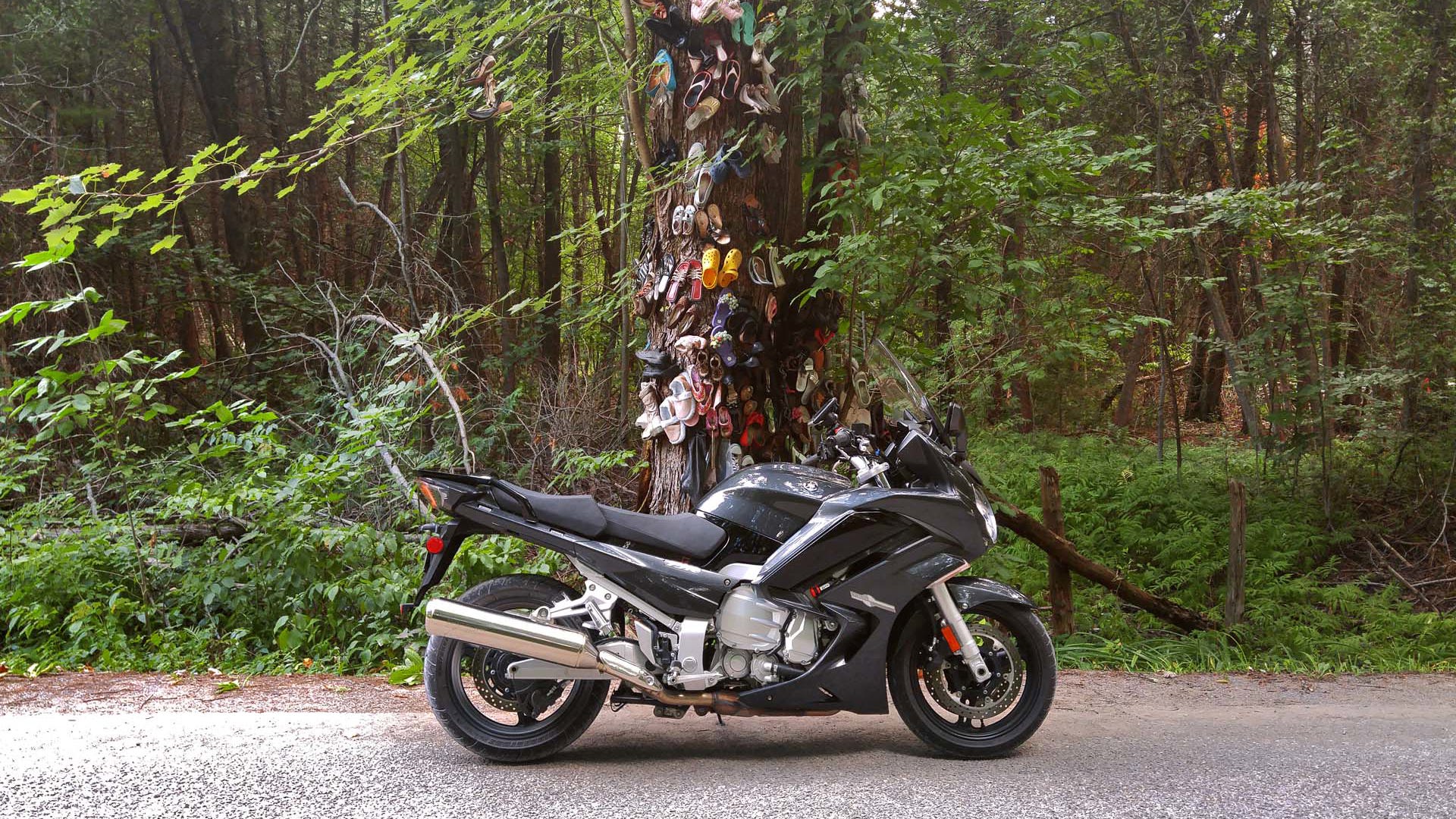
Averaging 5.4 L/100 km impressed me given the large frontal area of this bike, and the hefty amount of wind protection. While it pays off in terms of comfort, the screen on the FJR does traditionally have a drag penalty attached.
Coupled with the 288 kg curb weight and 1,298 cc inline-four, the FJR doesn’t have a good case on paper for fuel economy, yet achieves it. New for this year and part of the fuel economy story is the very tall sixth gear. It’s part of a fully redesigned gearbox that now houses six cogs where five used to be, without changing the size and shape of the aging engine case design. That new gear adds a smoothness to the riding experience that really enhances this bike’s comfort level. You could rest a cup of water on the seat or pegs at highway speed and barely register a ripple.
There are other hints at the FJR’s age, however. This bike is essentially unchanged from its debut some 15 years ago, and little things like the simplistic swing-arm design and the low-slung exhausts give that away.
Yet there is some nifty tech here. Heated grips and cruise control, for one. An electrically adjustable windscreen for another. There’s also a slipper clutch, plus LED taillights and headlights – which also “corner” for additional night visibility. They were effective too: my night confidence was good aboard this big Yammie.
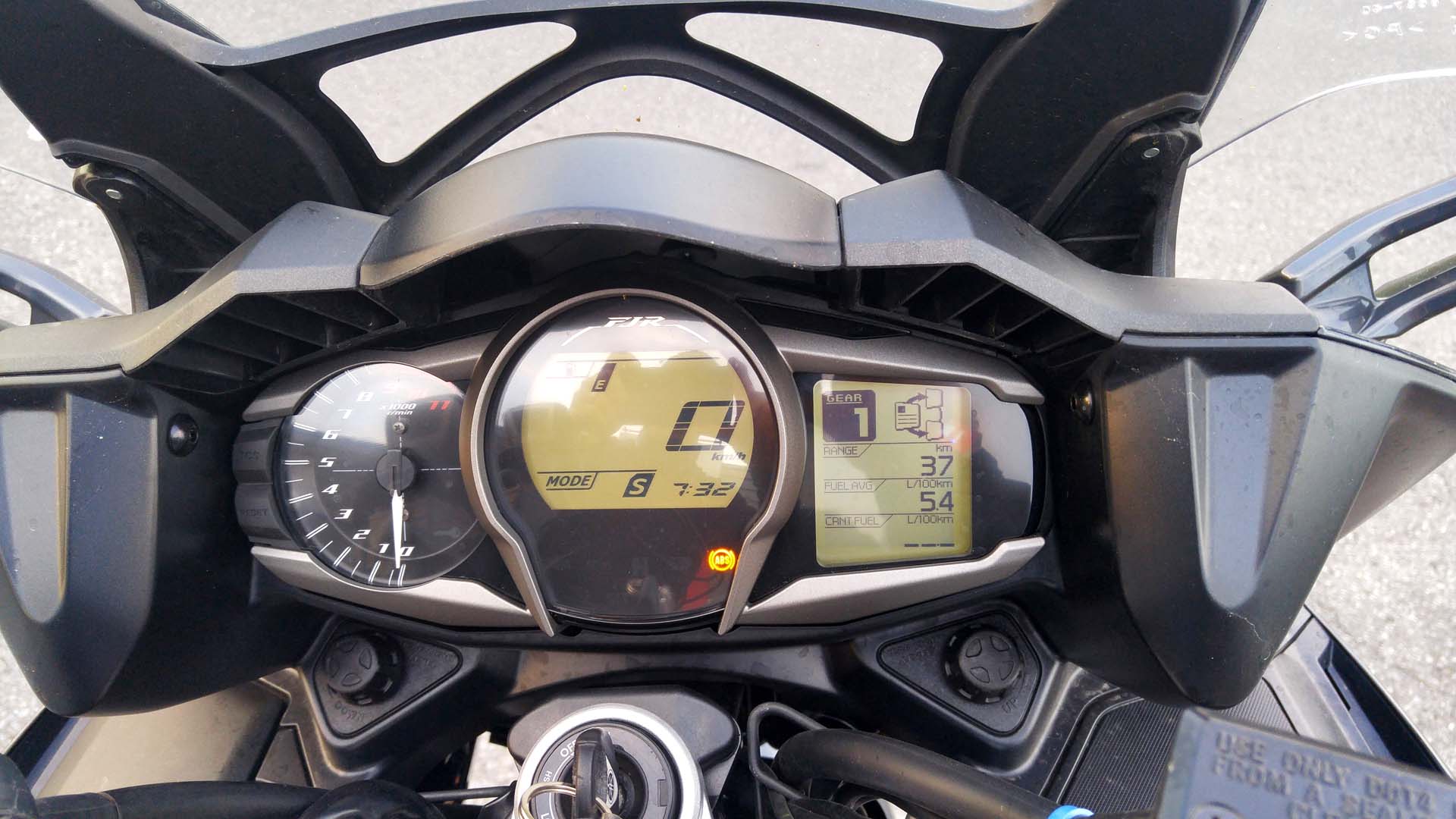
If you pony up another $1,100 you can get electrically adjustable suspension too, but honestly, it’s not necessary. I never once felt grip-compromised, nor like I was getting a jostling.
In fact, between the heated grips, the cruise control, the wide, comfortable, seat and the wind protection, I don’t think I felt any different than my wife and daughter did in the car. On the way home, I went the short way, trailing them all the way back from eastern Quebec to Toronto. All was well until we went through a horrendous rain storm.
My wife stopped at the next service station – odd, given I had 250 km of range still and she had even more. She was worried about my welfare, but I was completely dry. My Klim riding gear was one reason, but the other was the windscreen on this bike. Sure, it’s noisy, but it’s also dramatically effective. There was even a puddle of water right in front of it on a horizontal bit of material, but it was held in place by the aerodynamic eddies and never intruded into the little virtual cockpit. I was impressed.
And nine hours later when we arrived home at 2am, it was me who looked more cheerful and refreshed; coddled by a bike that offers car-like levels of comfort, and yet refreshed by the open air and sheer joy of riding.
Key Specs: 2017 Yamaha FJR1300 ABS
Engine: 1,298 cc liquid-cooled DOHC inline-four
Torque: 102 lb-ft @ 7,000 rpm
Horsepower: 145 hp @ 8,000 rpm
Transmission: Six-speed, shaft drive
Chassis: Aluminium twin-spar with engine as stressed member
Front suspension: 48 mm inverted fork with adjustable spring preload, compression and rebound damping/43 mm inverted fork with electronically adjustable compression and rebound damping
Rear suspension: single shock with adjustable spring preload and rebound damping /single shock with electronically adjustable spring preload, compression and rebound damping
Front brakes: dual four-piston calipers with 320 mm discs, unified with ABS
Rear brakes: single two-piston caliper with 282 mm disc, unified with ABS
Tires: 120/70ZR17 front, 180/55ZR17 rear.
Seat height: 805–825 mm
Wheelbase: 1,545 mm
Fuel capacity: 25 L
Claimed wet weight: 288 kg
Pricing: 2017 Yamaha FJR1300
2017 FJR1300 ABS: $18,399
2017 FJR1300ES ABS: $19,499

